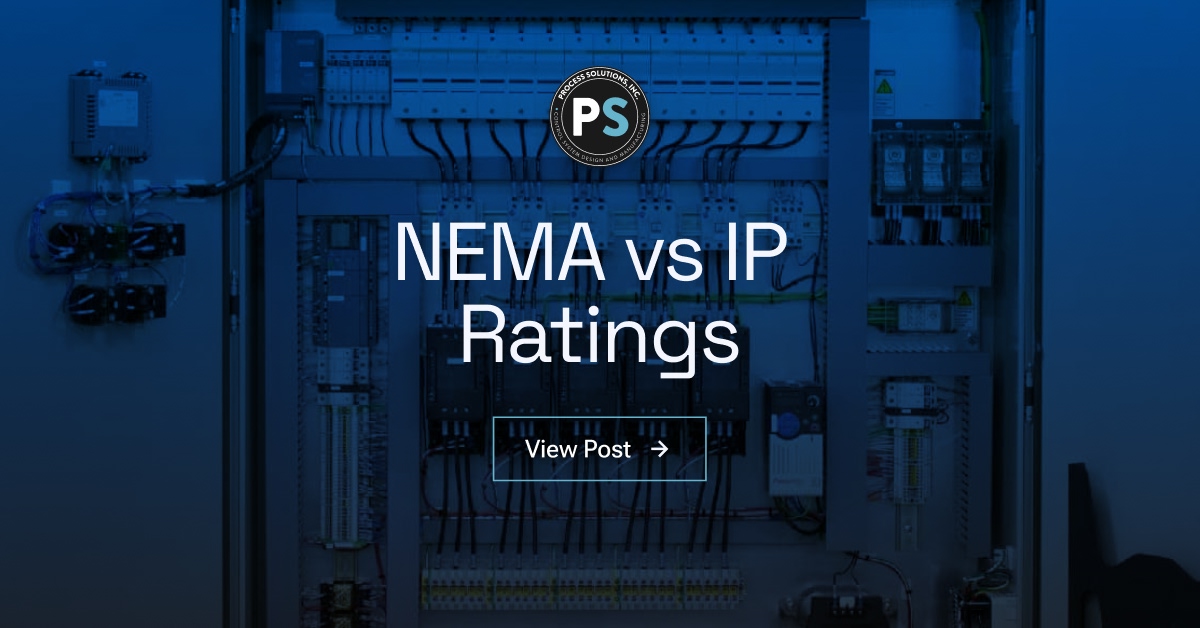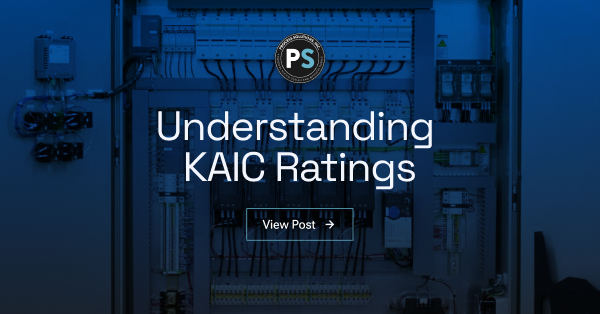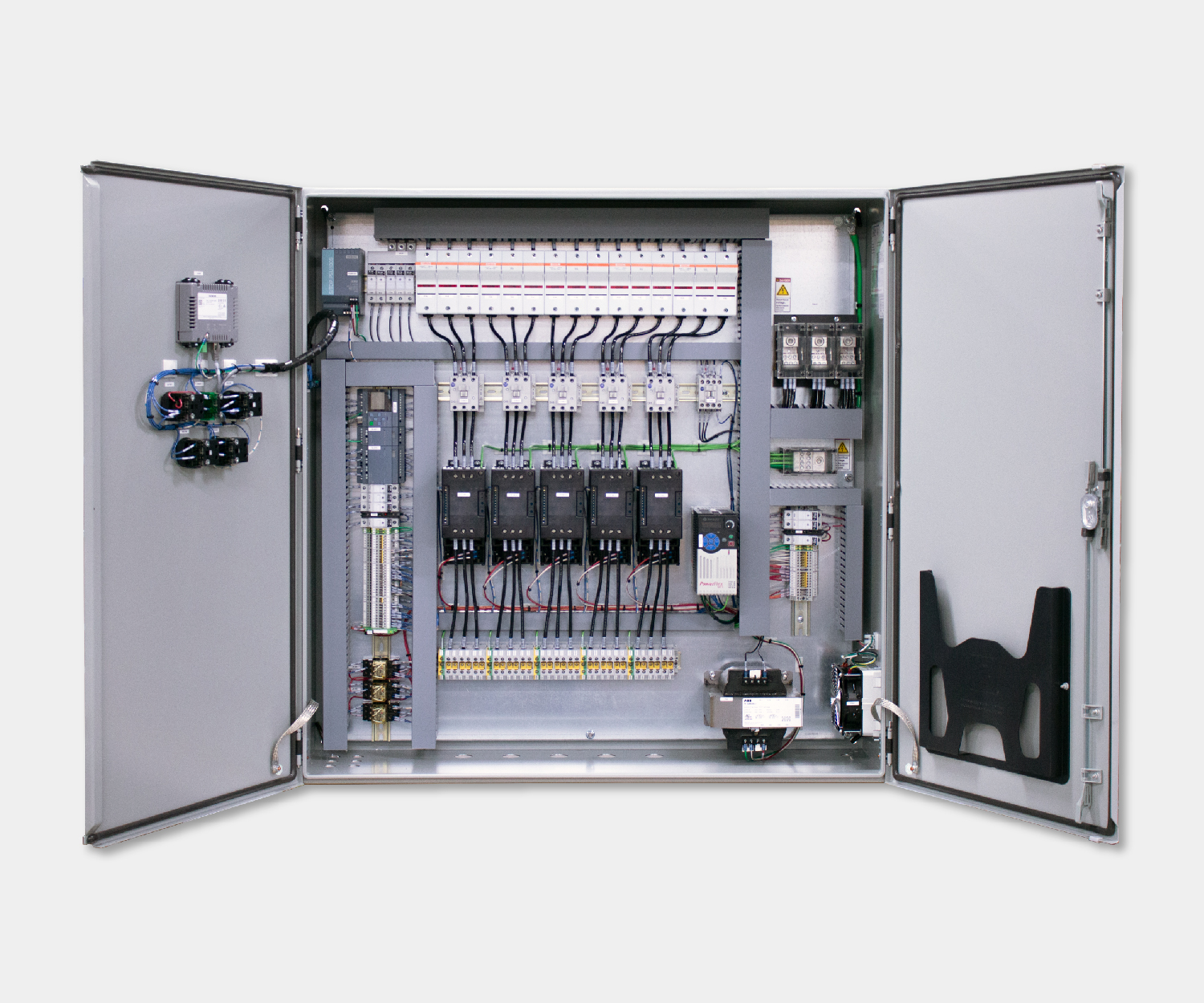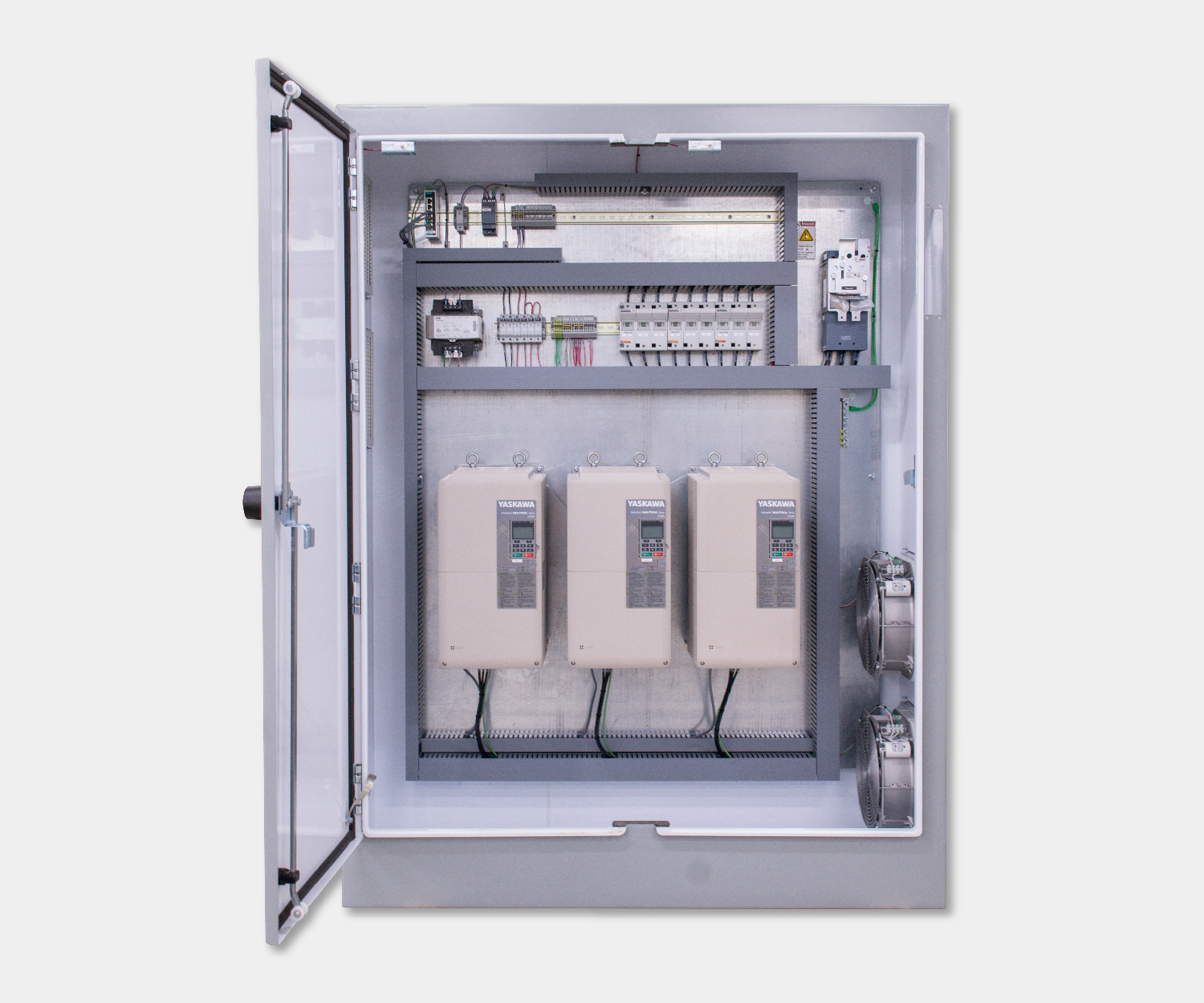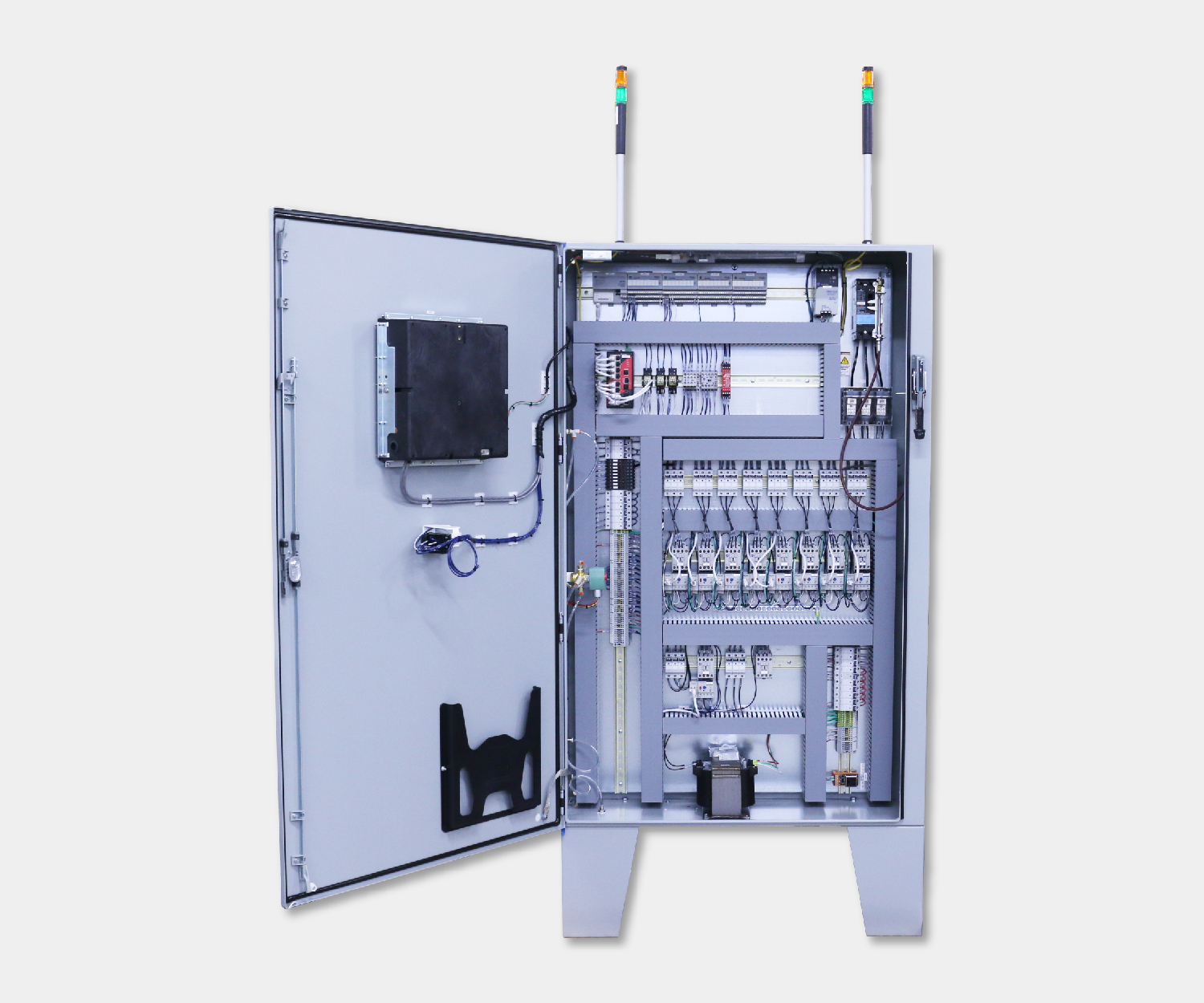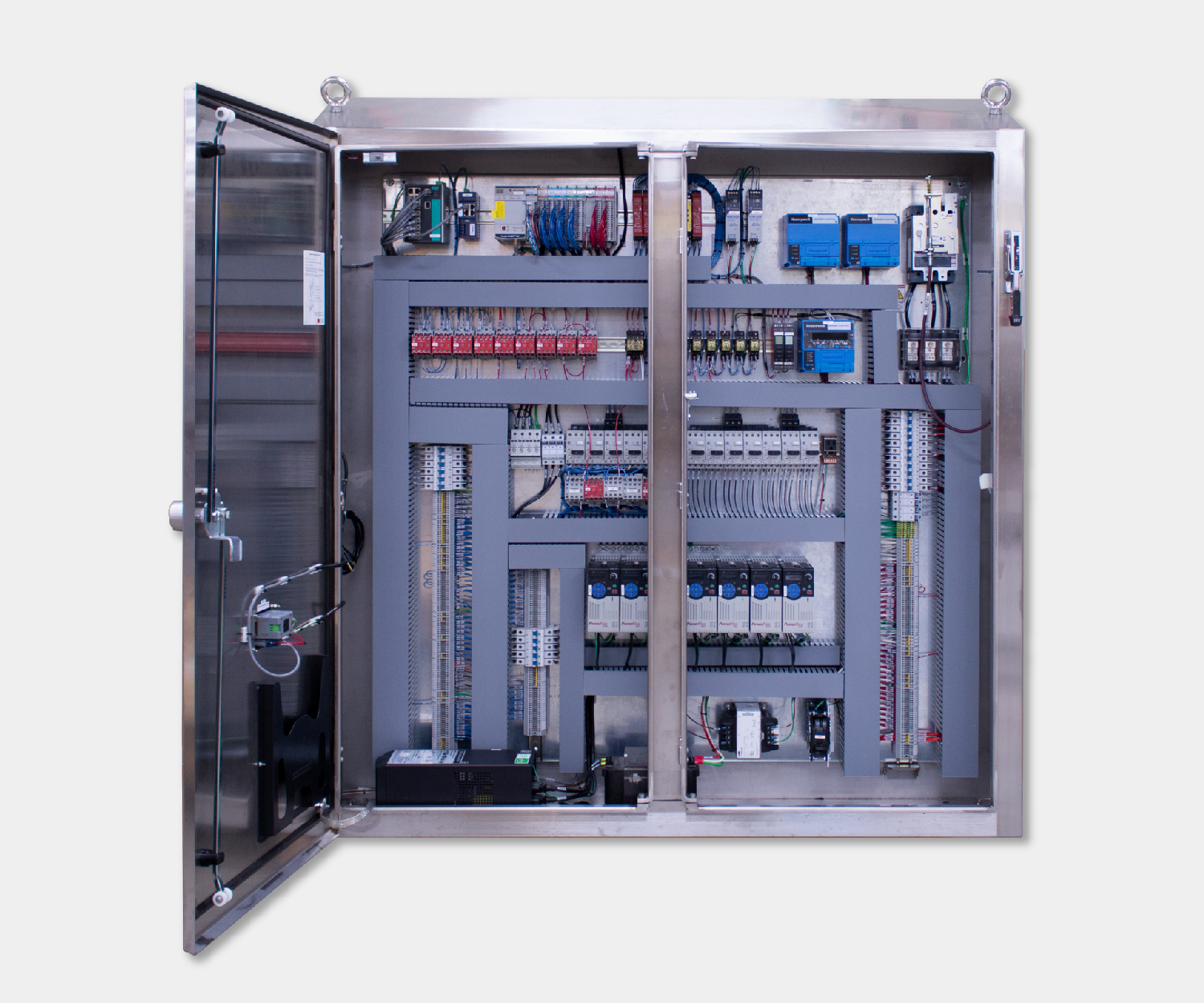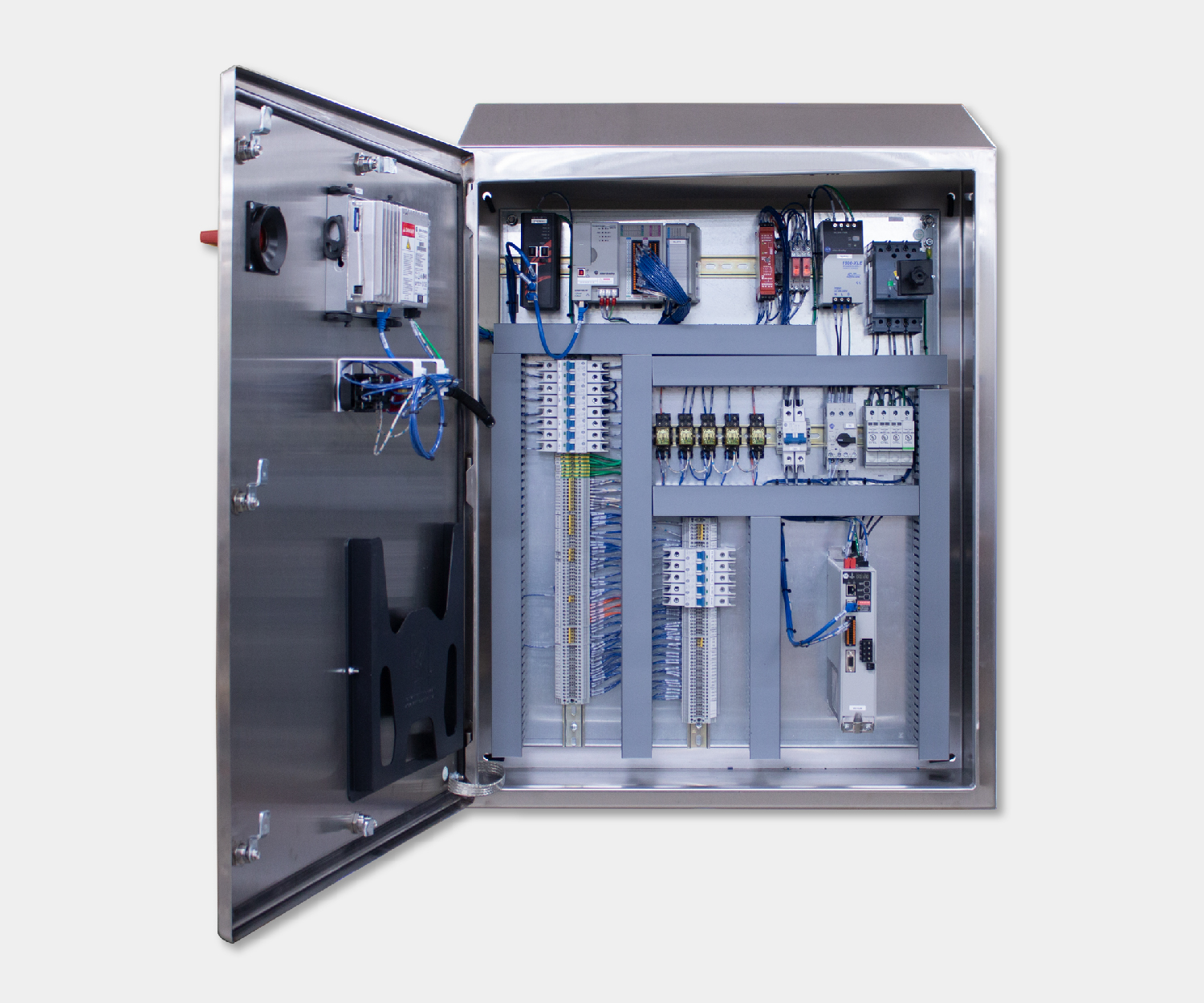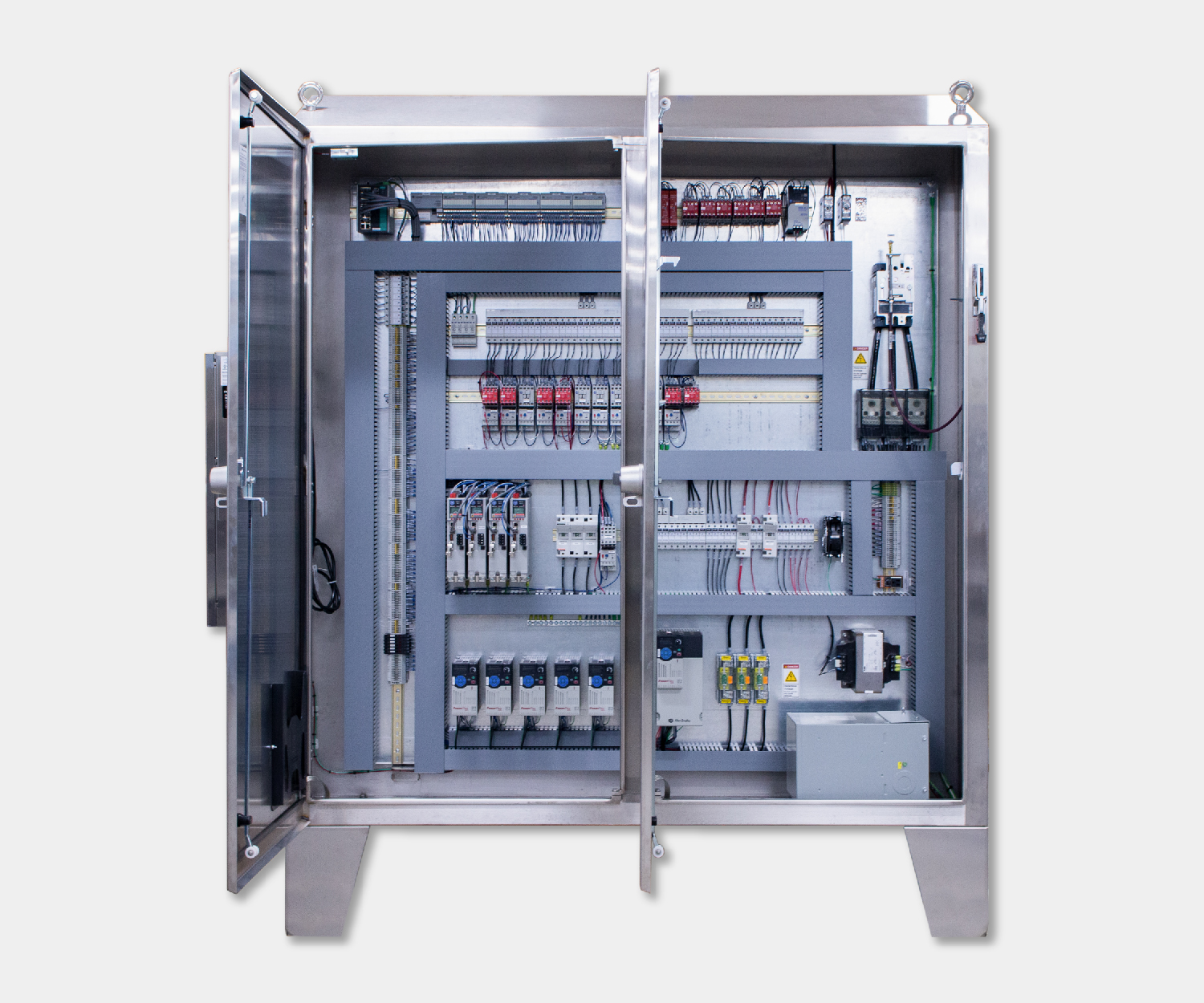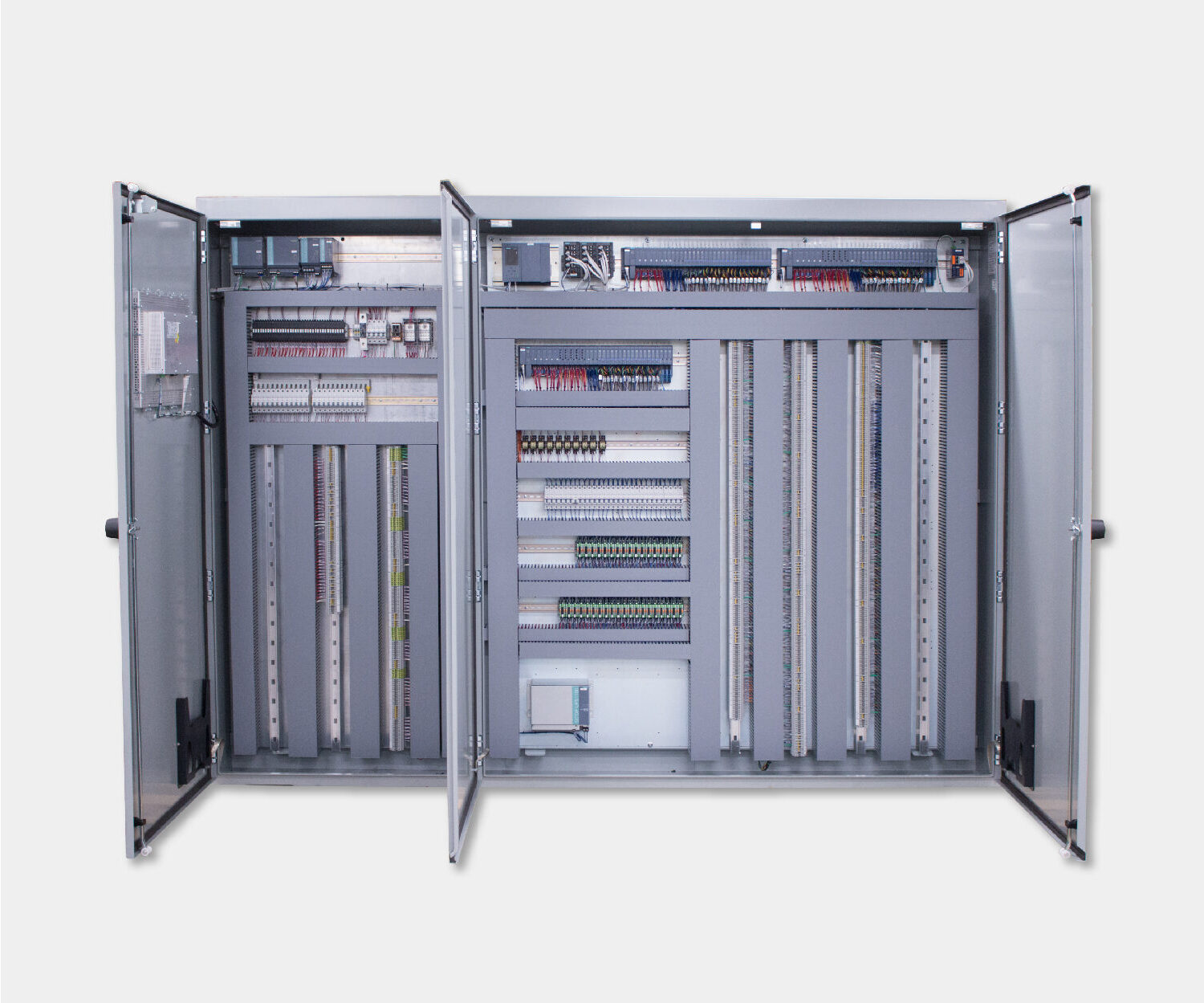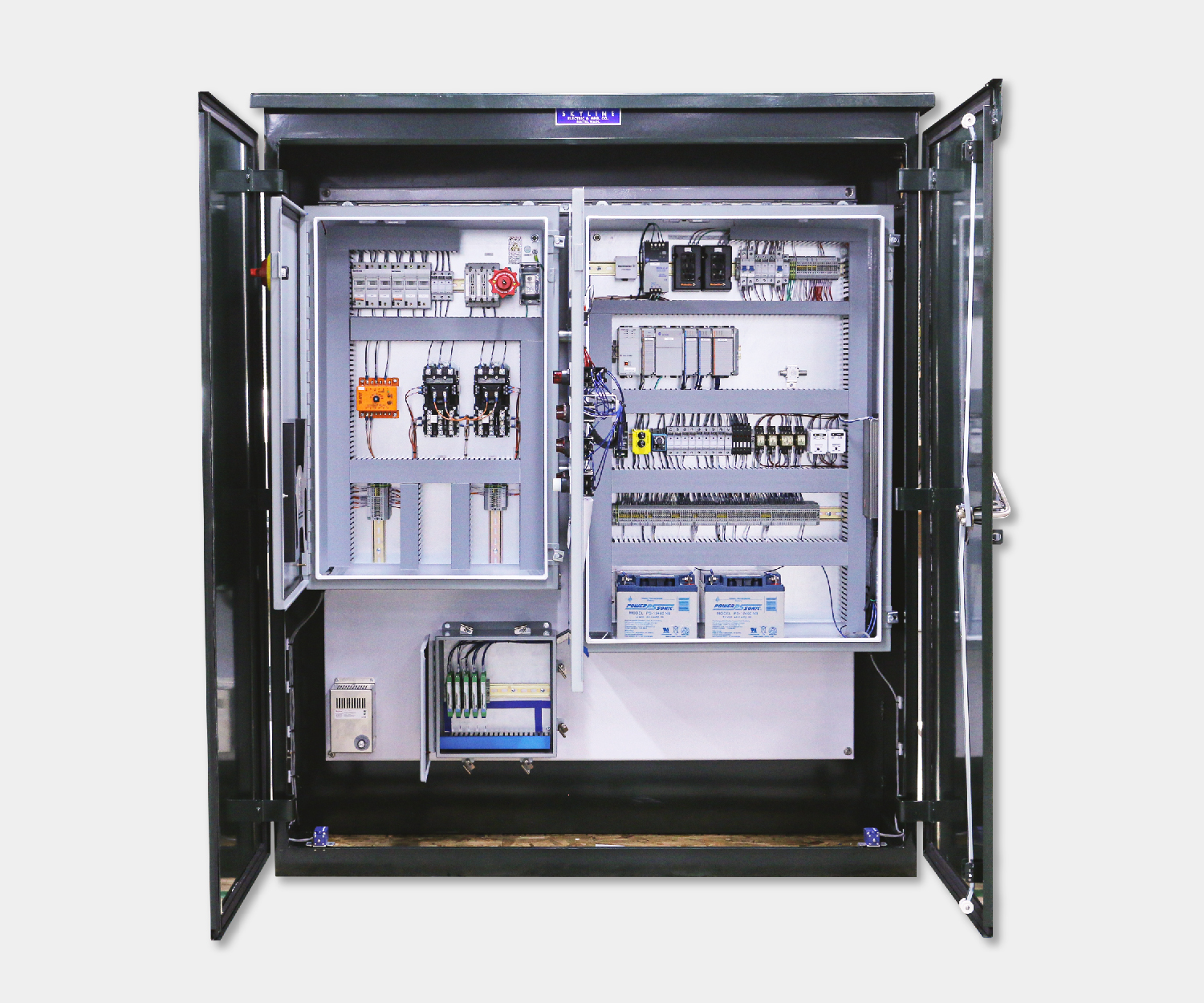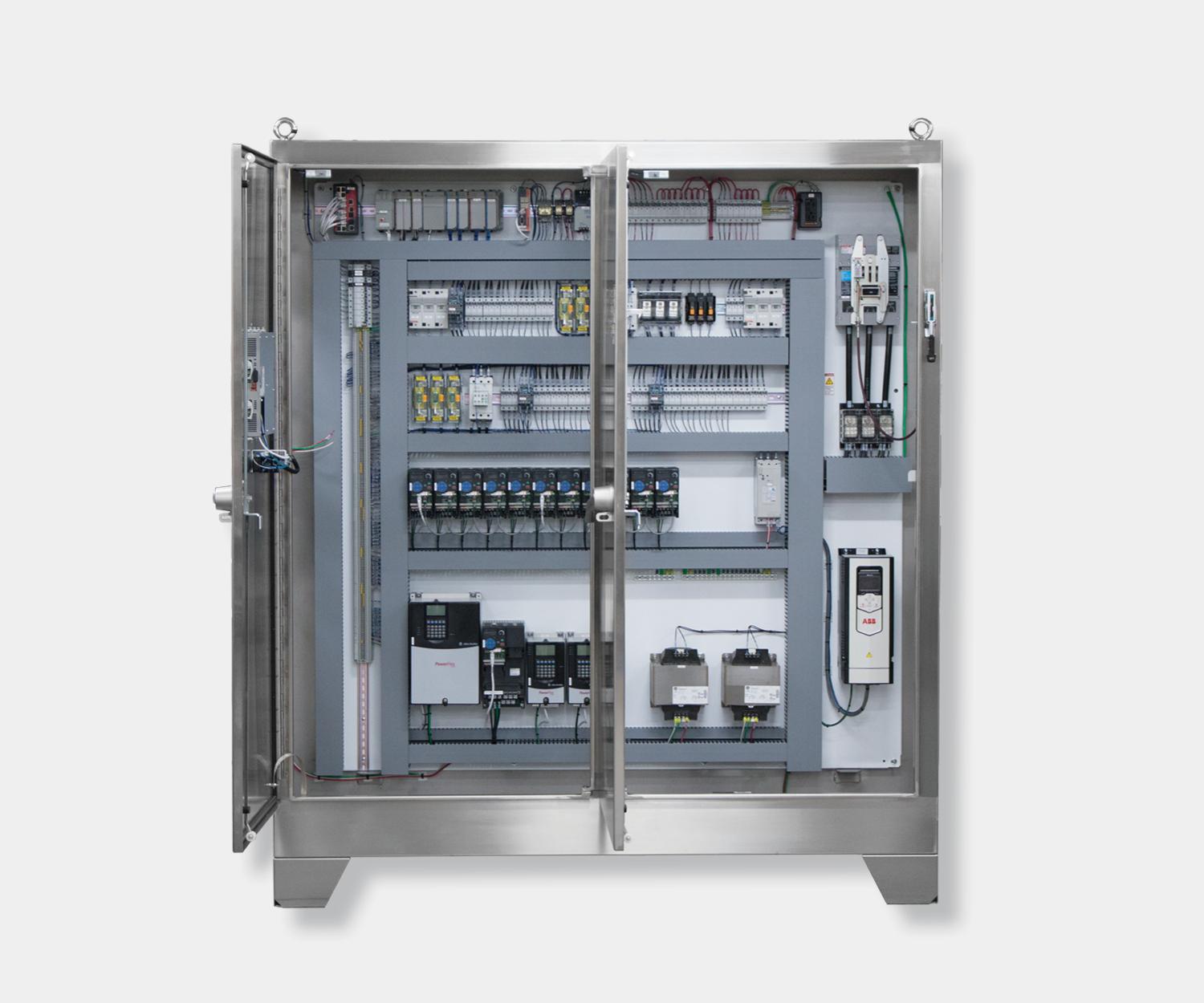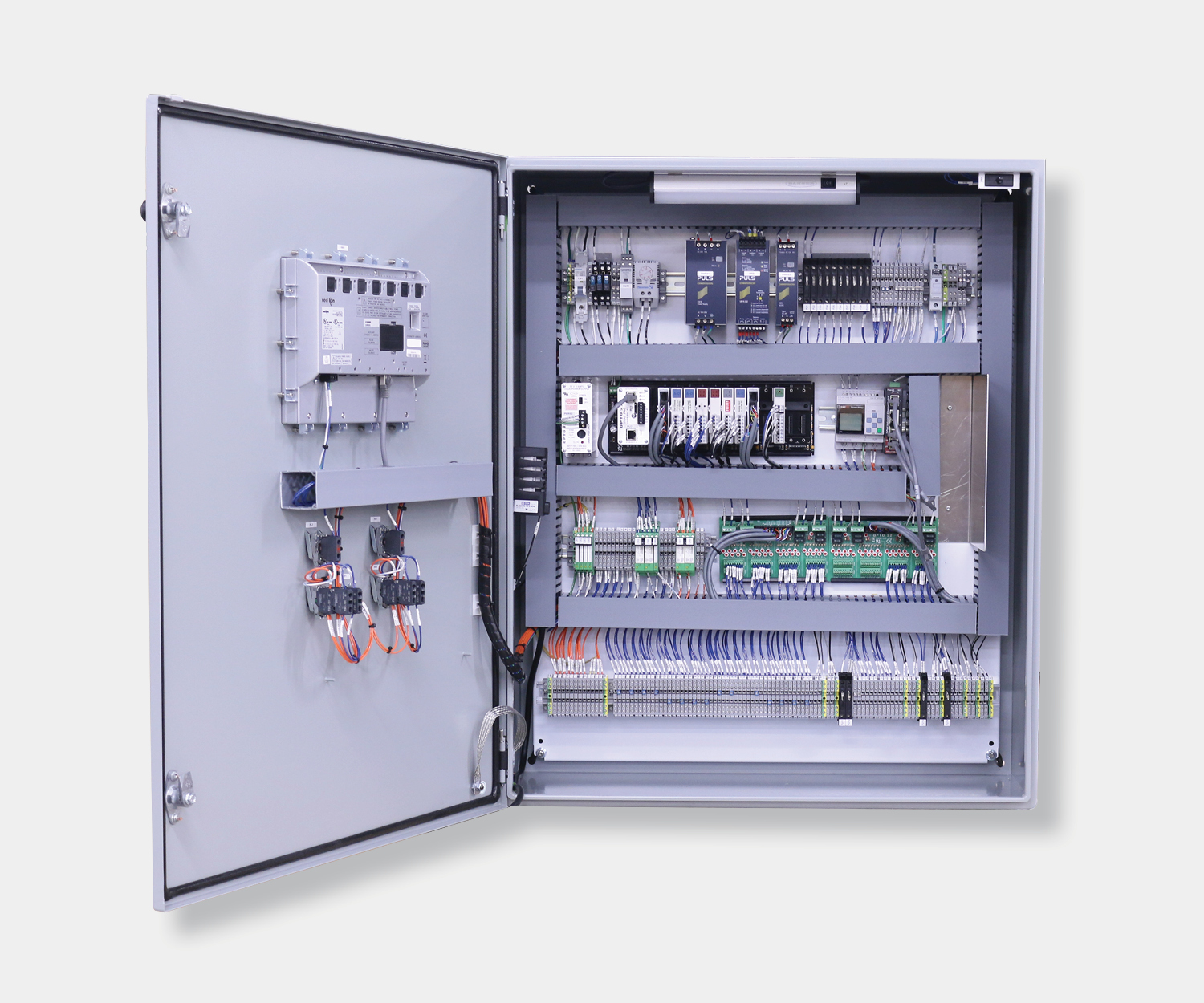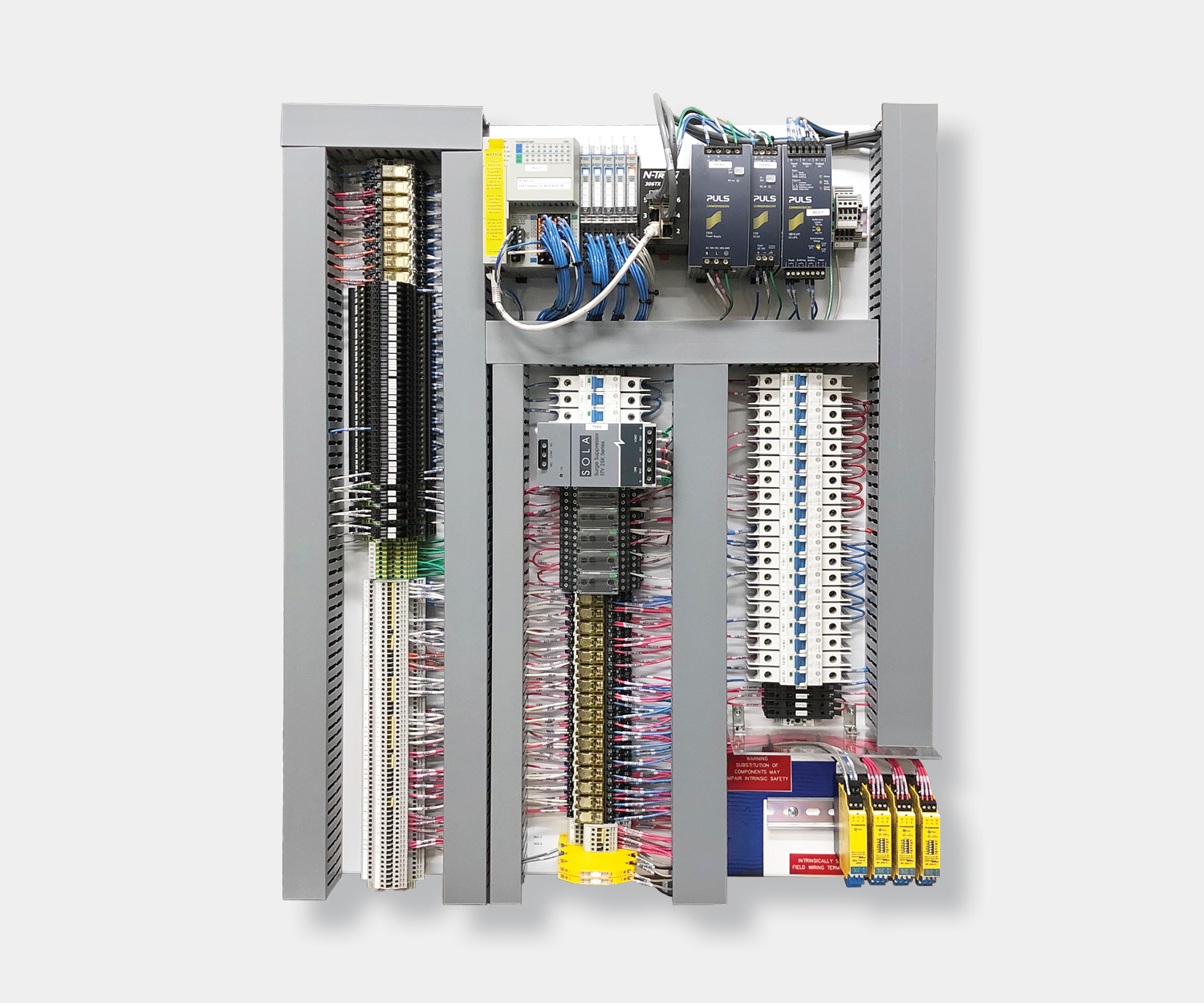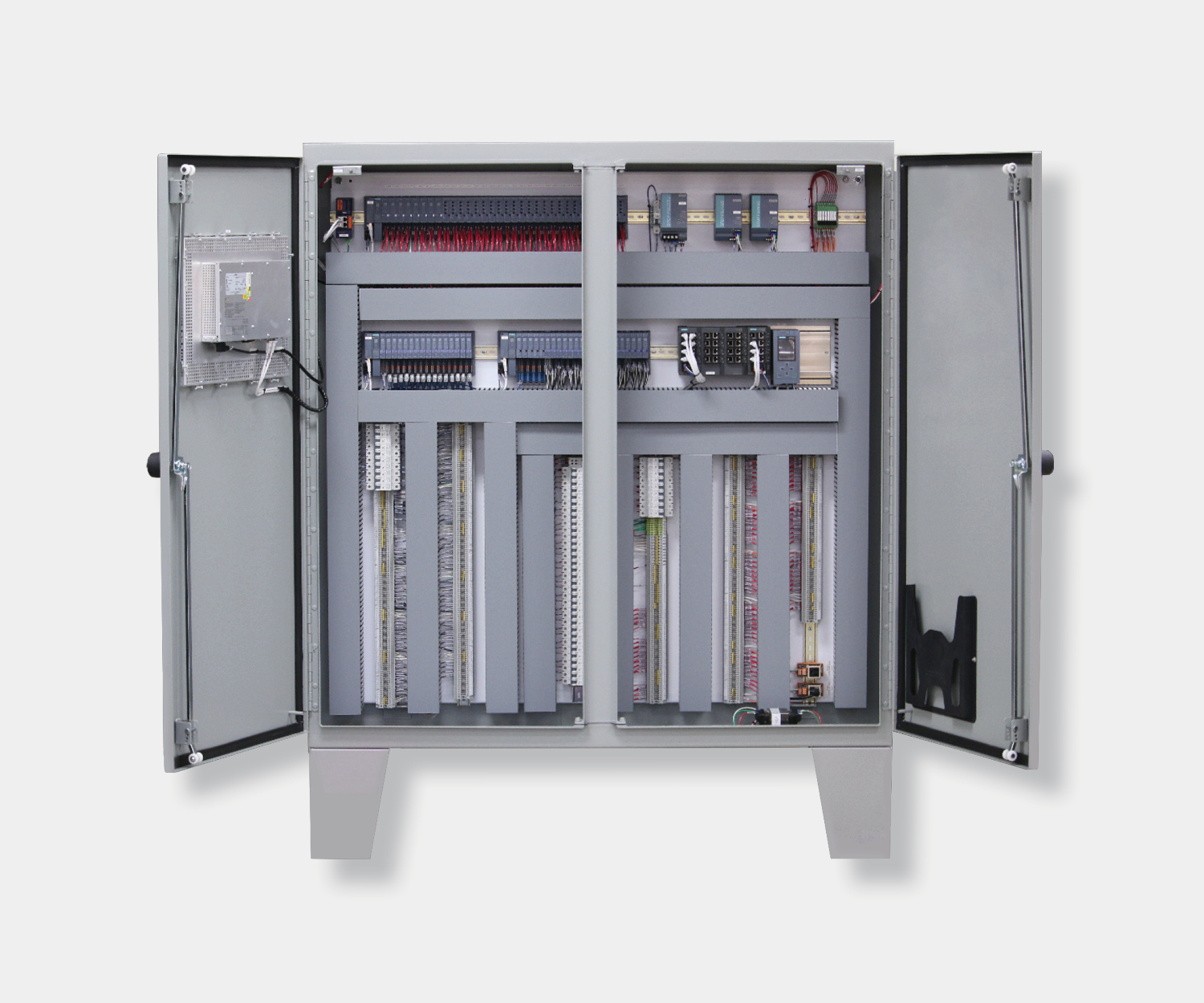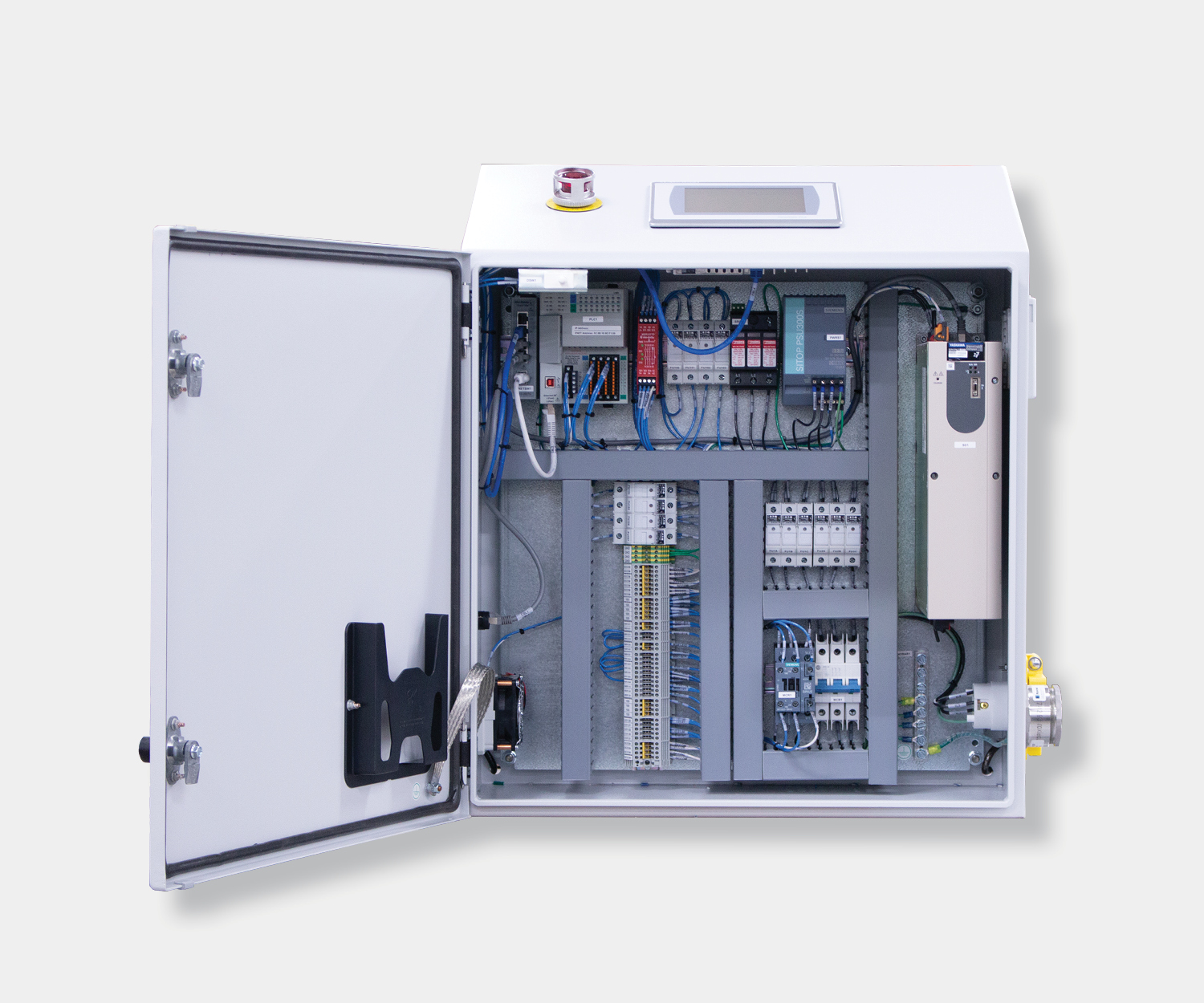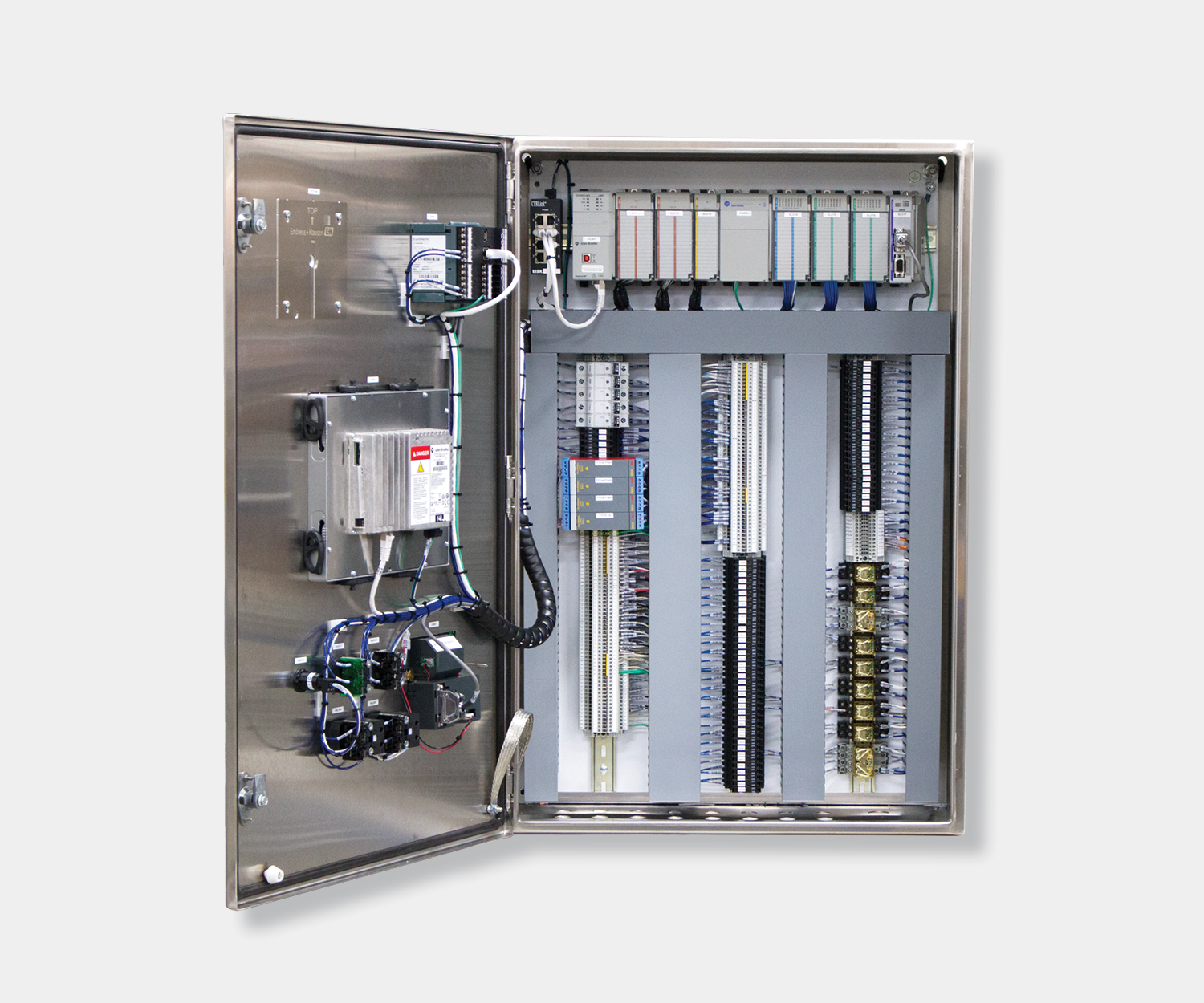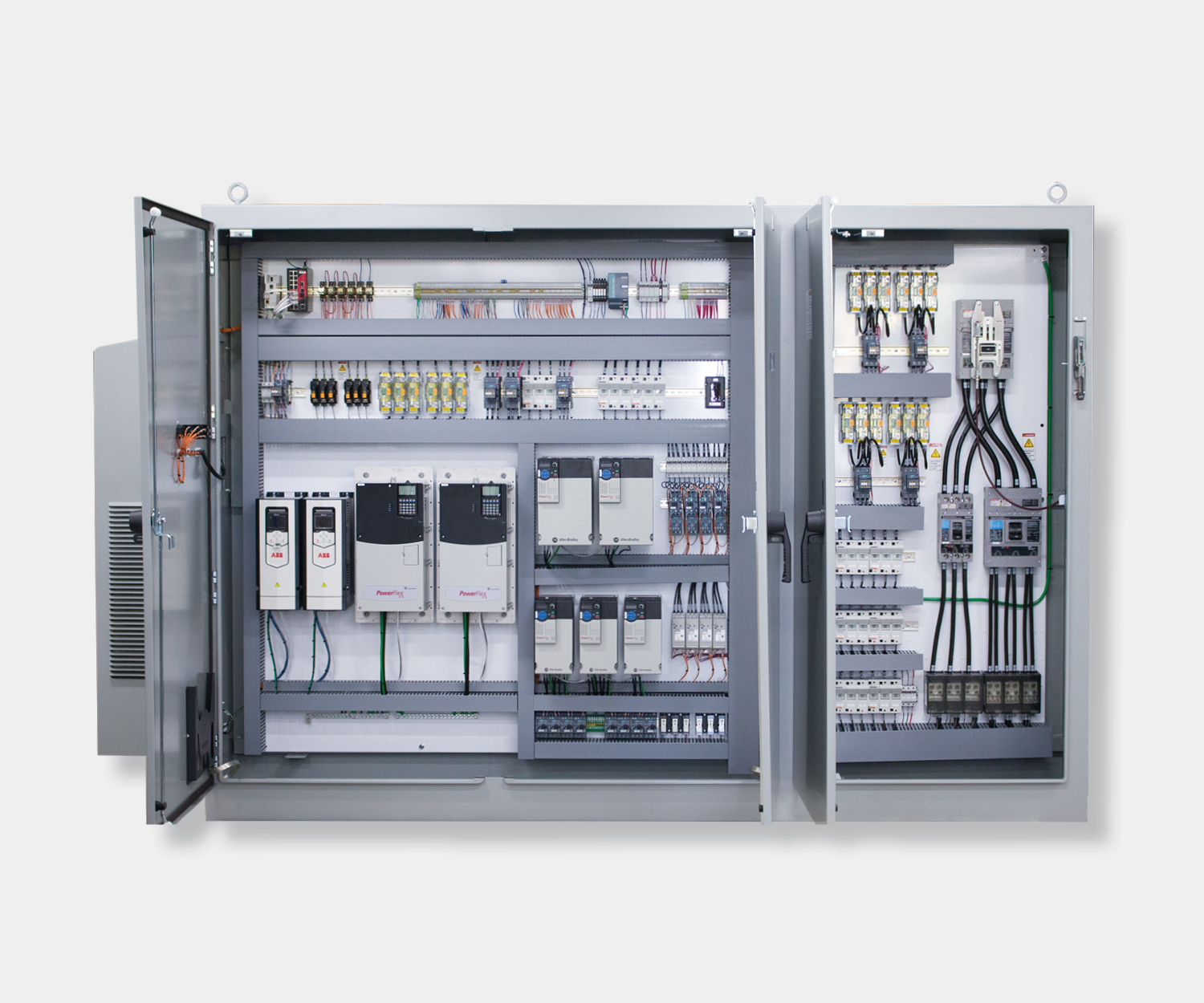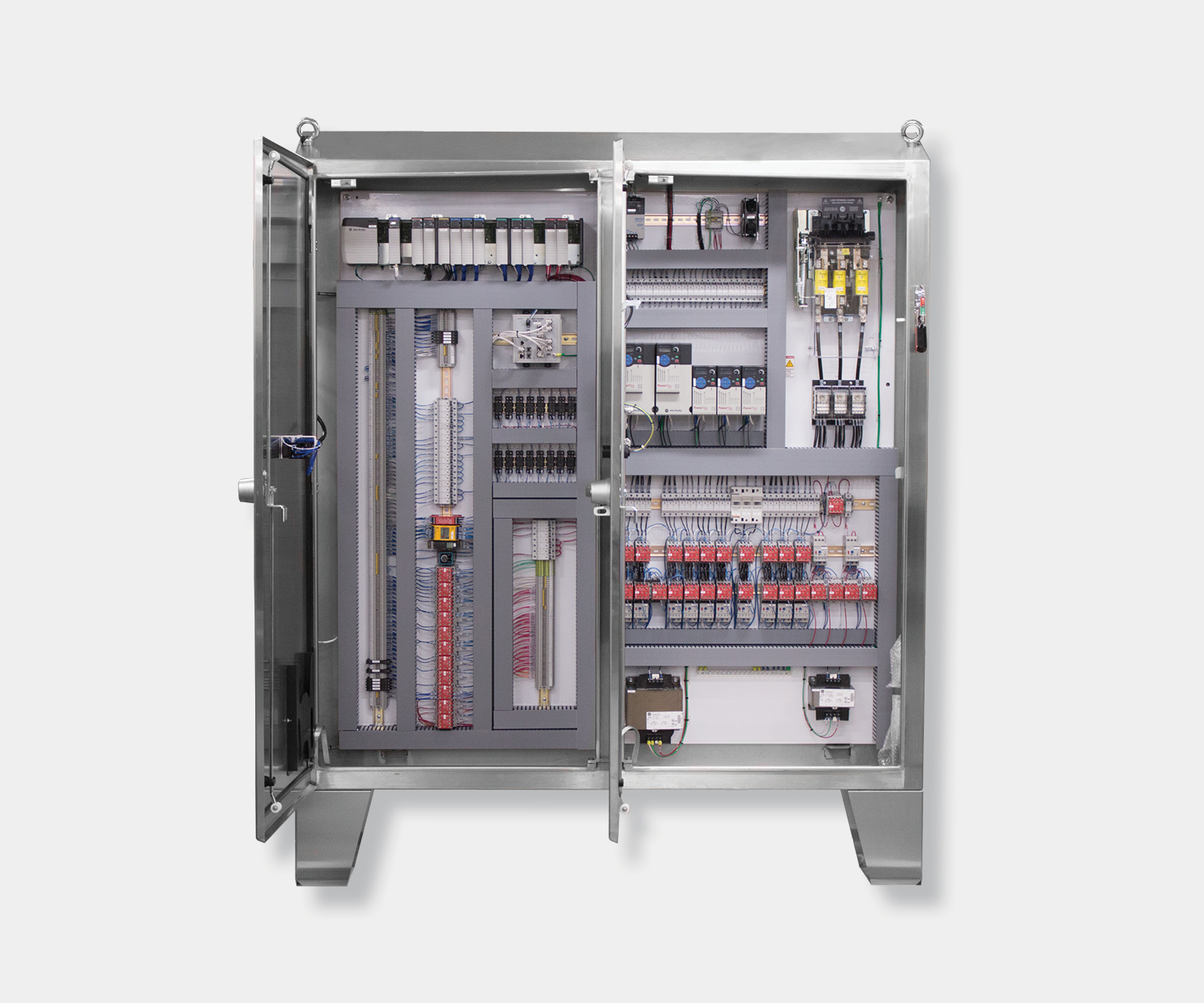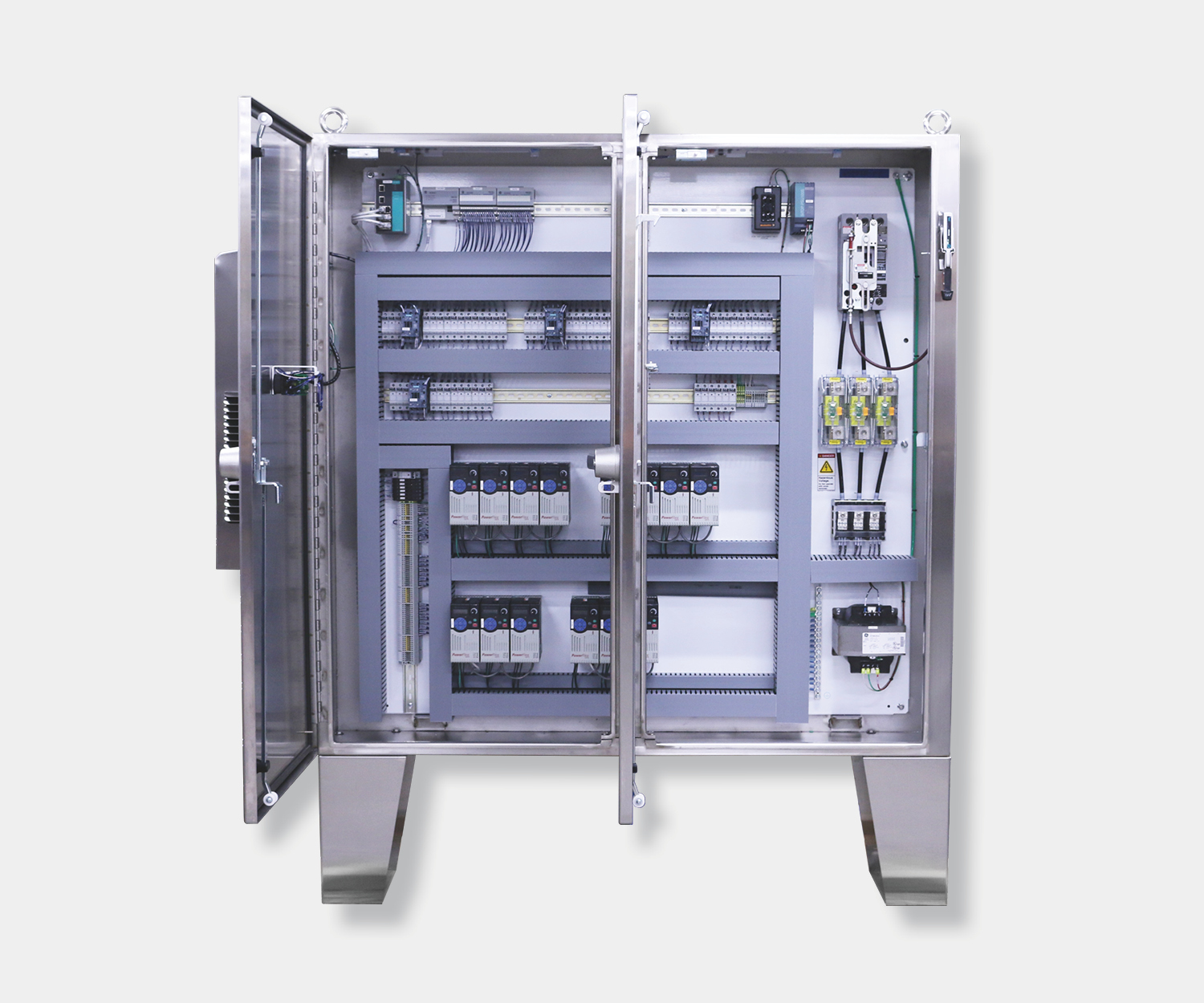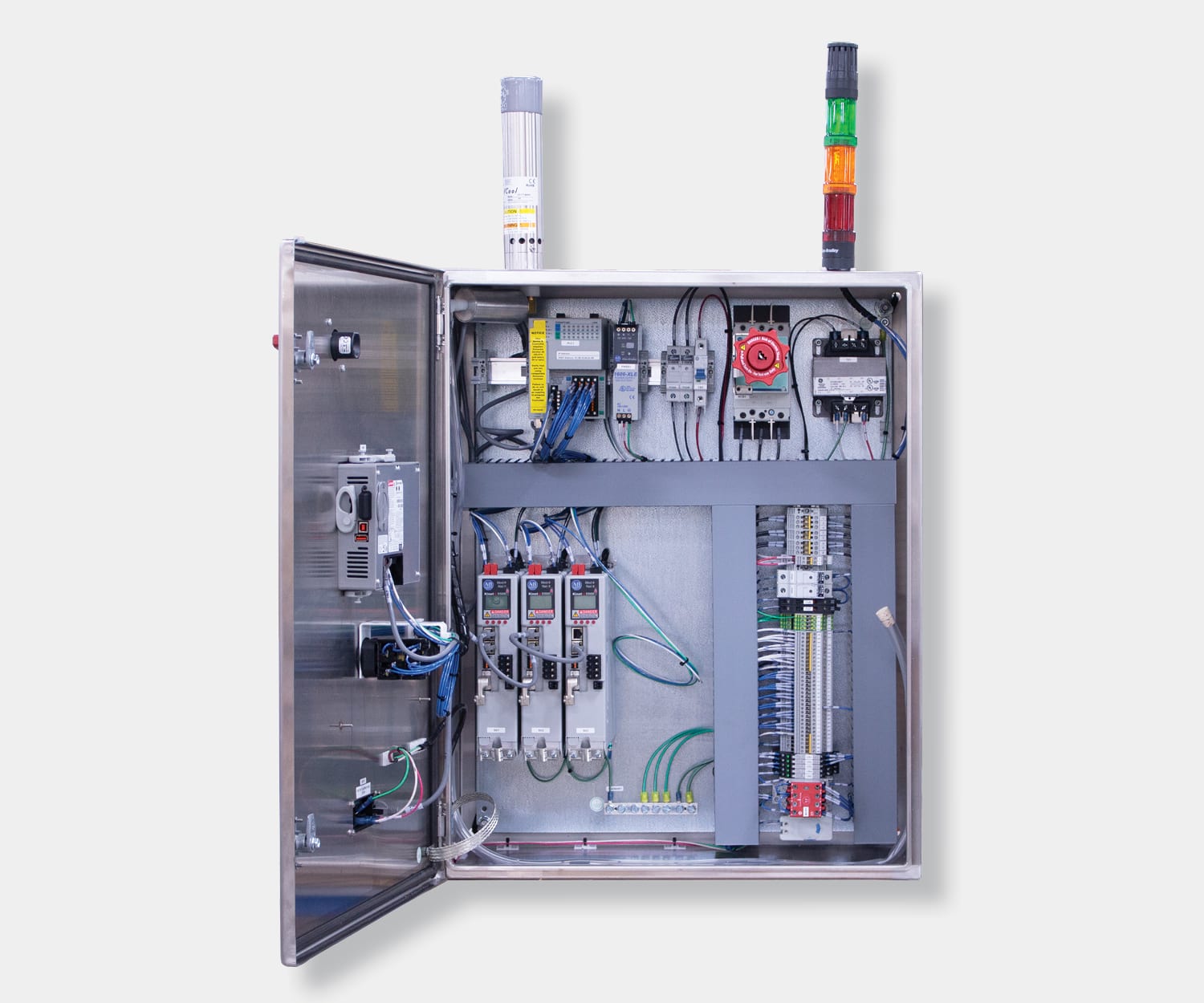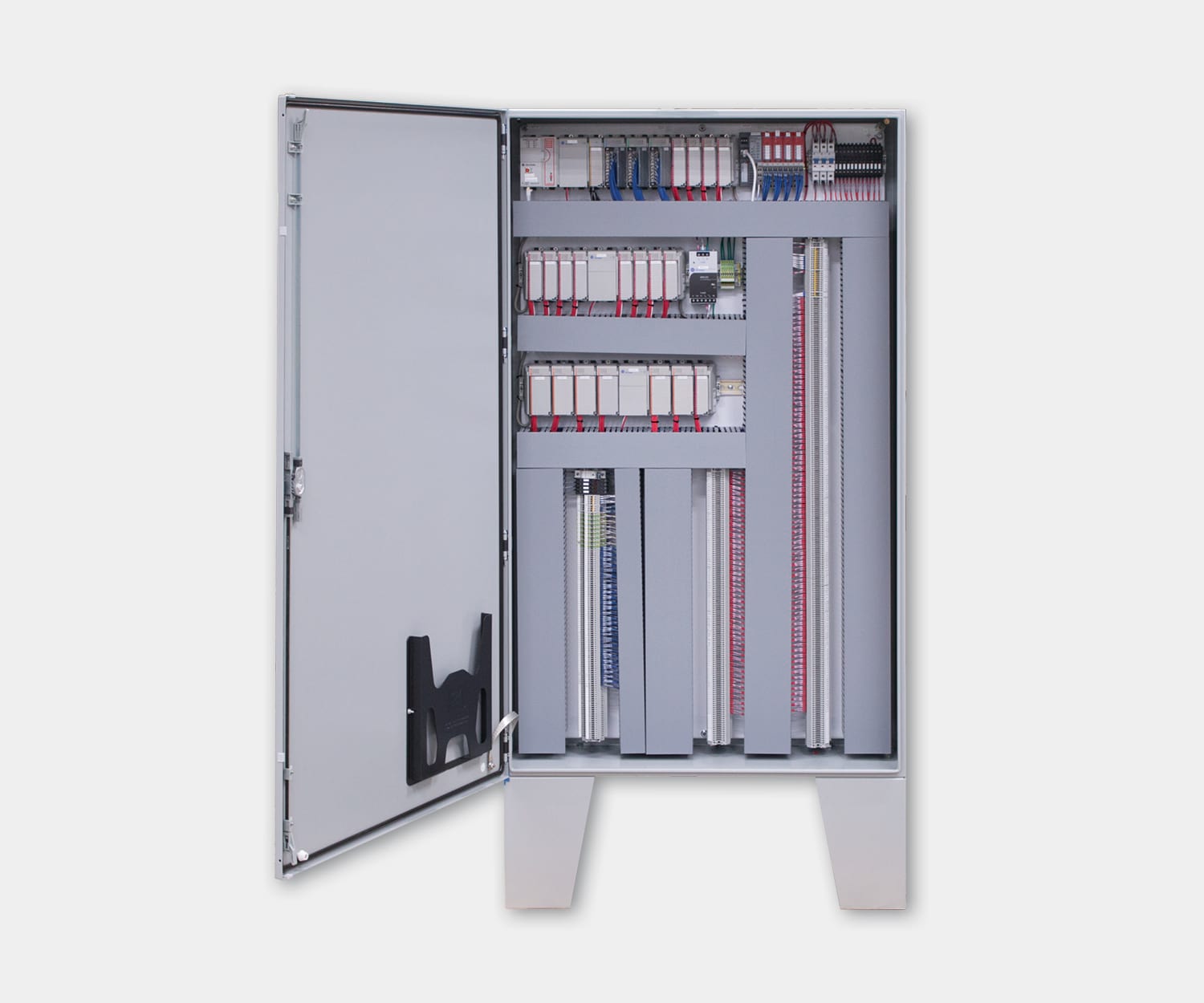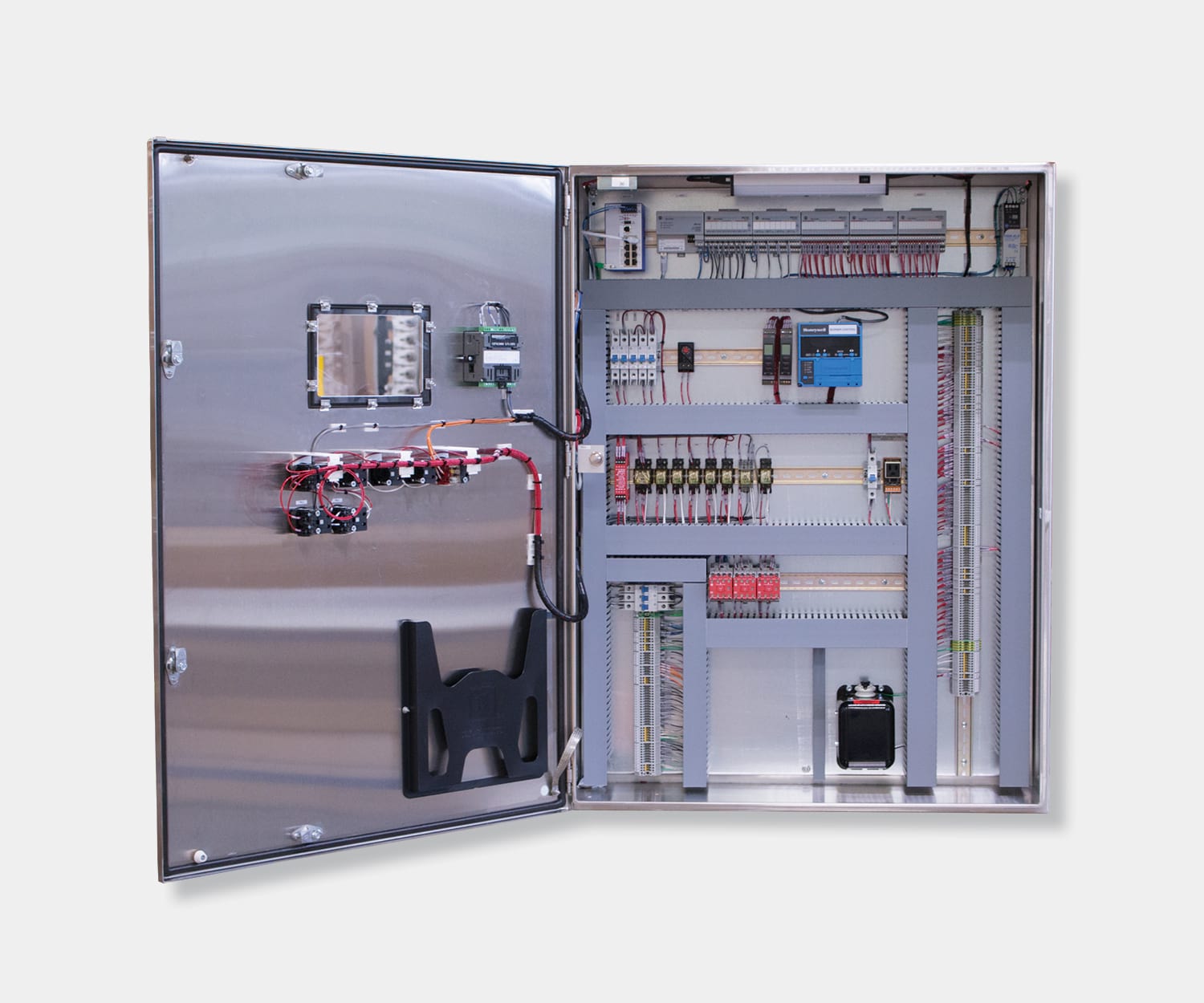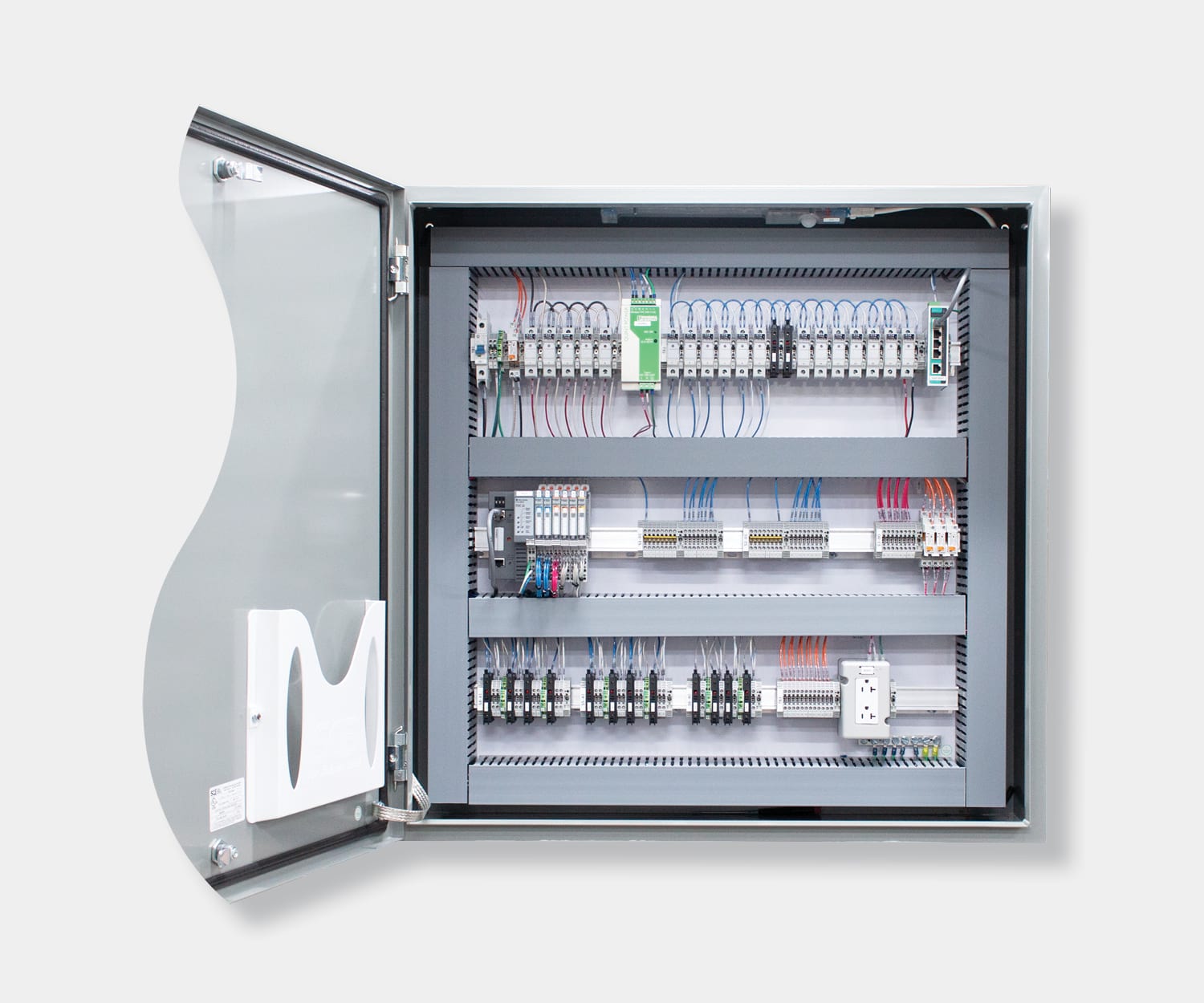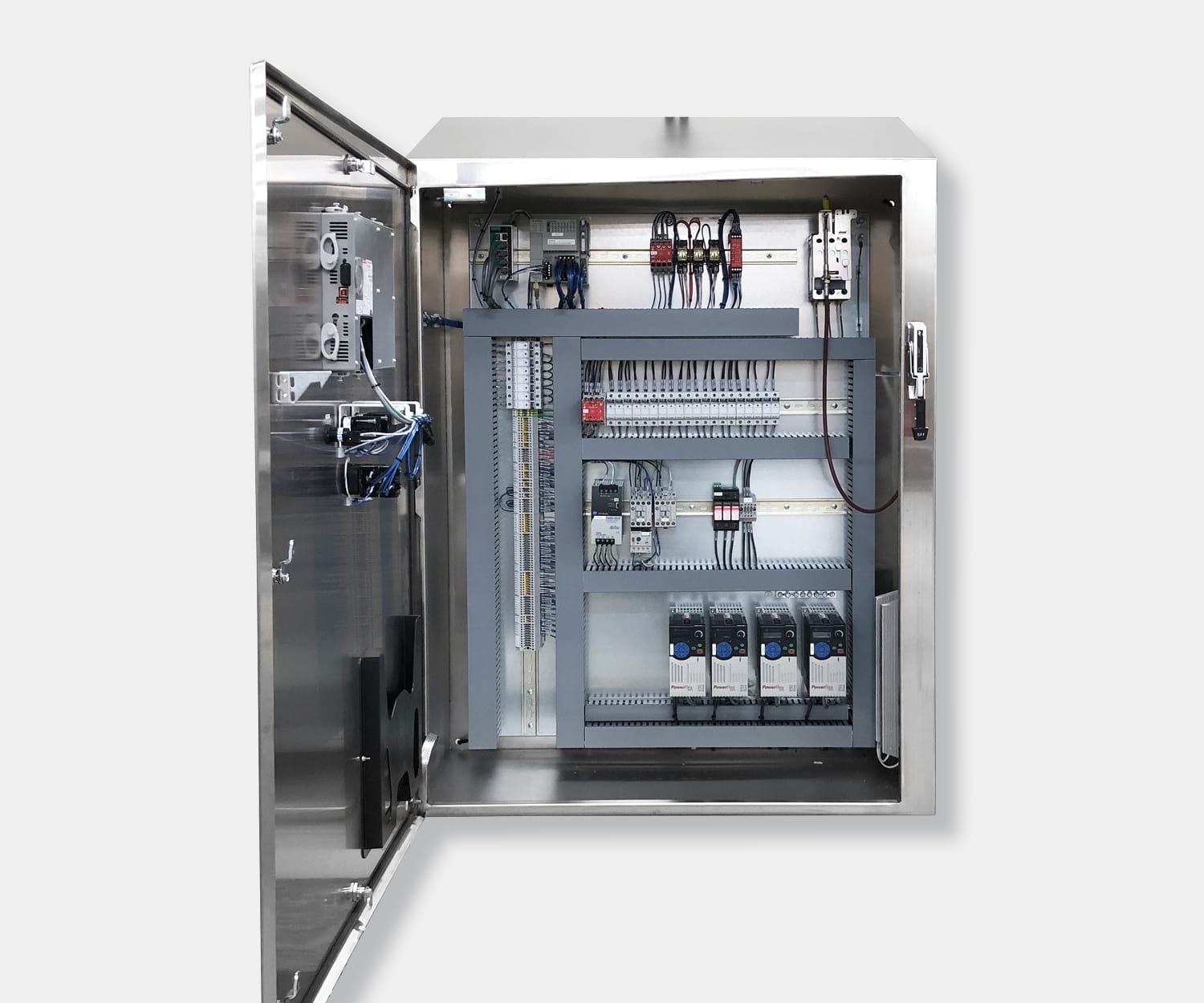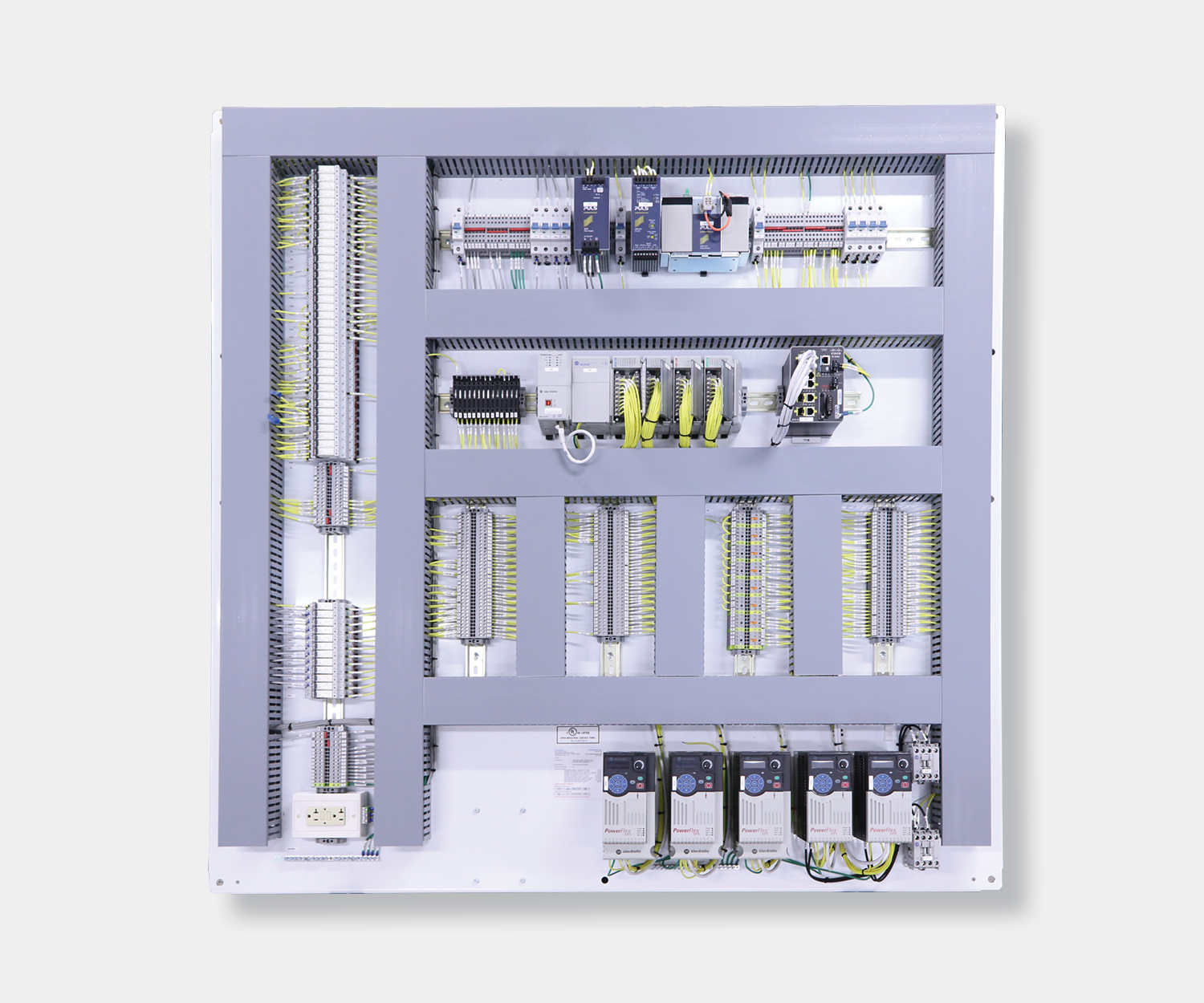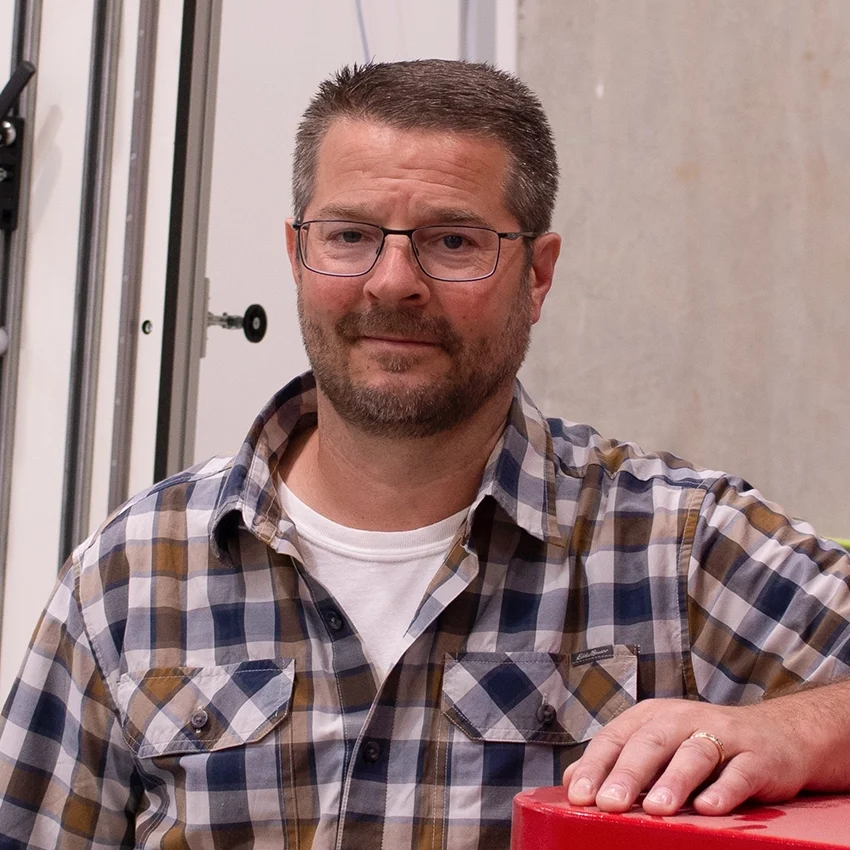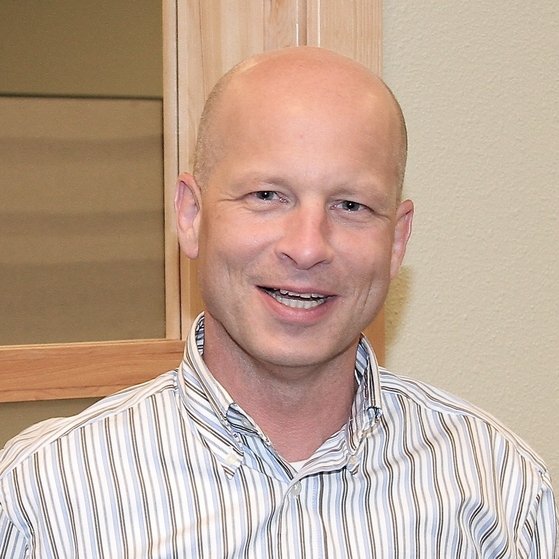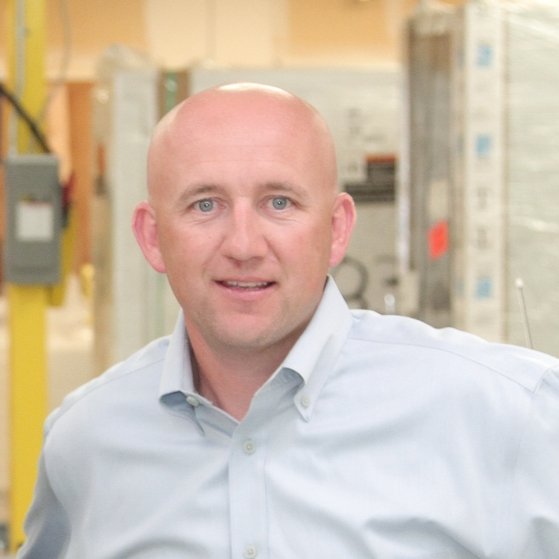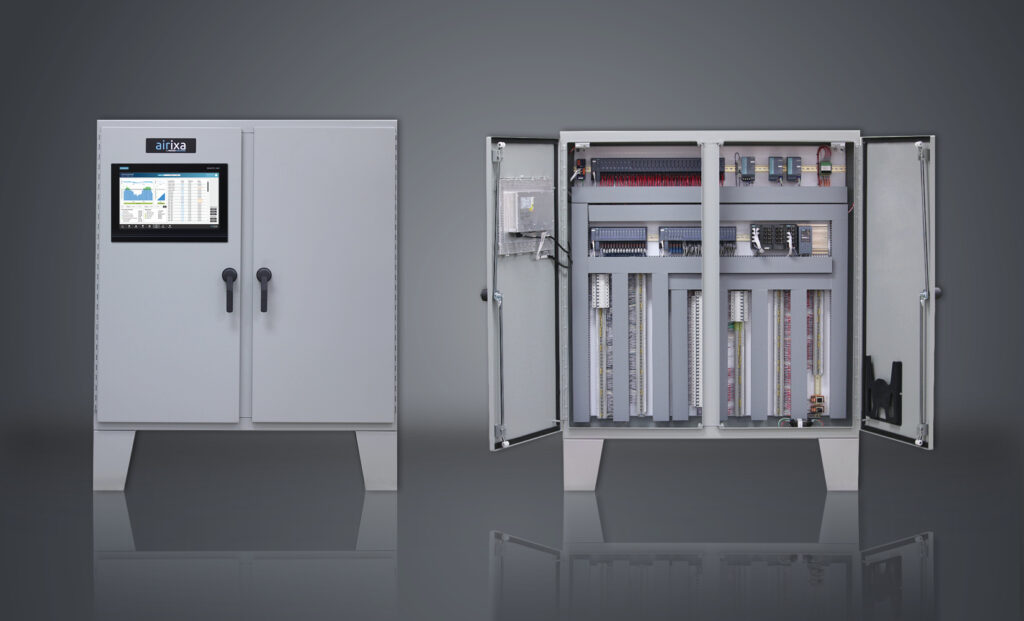
Industrial control panels are the backbone of modern manufacturing and process automation. These sophisticated electrical enclosures house the critical components that monitor, control, and protect industrial equipment across aerospace, food and beverage, energy, biotech, and data center facilities worldwide.
Each control panel type serves specific operational needs, from managing individual motors to coordinating complex, high-I/O automation systems with thousands of input and output points. Understanding these different types helps facility managers, operations leaders, and engineering teams make informed decisions about their automation infrastructure.
Motor Control Centers (MCCs)
Motor control centers represent the powerhouse solution for facilities requiring centralized control of multiple motors. These robust panel systems use vertical cabinet sections containing power distribution busbars and dedicated mounting locations for individual motor controllers.
Each motor controller within an MCC contains essential protection and control components: contactors or motor starters, overload relays for motor protection, circuit breakers and fuses for electrical protection, and power disconnect switches for safety isolation.
Modern MCCs extend far beyond basic motor control. They commonly integrate variable frequency drives (VFDs), programmable logic controllers (PLCs), operator interface devices, and comprehensive metering systems. This integration capability makes MCCs ideal for large manufacturing facilities, distribution centers, and data centers where dozens or hundreds of motors require coordinated control from a central electrical room.
Typical Applications: Aerospace manufacturing facilities with extensive conveyor systems, food processing plants with multiple pumps and mixers, and fulfillment centers managing robotic material handling systems.
PLC Control Panels
PLC control panels house the industrial computers that serve as the brain of automated systems. These panels contain programmable logic controllers that continuously monitor input devices like sensors, switches, and measurement instruments, then execute programmed responses through connected output devices.
A well-designed PLC control panel includes power distribution components, I/O modules for connecting field devices, communication interfaces for network connectivity, and protective devices to ensure reliable operation. Modern PLC panels often incorporate Ethernet switches for connecting to supervisory systems, human-machine interfaces (HMIs), and enterprise networks.
The scalability of PLC control panels makes them particularly valuable for facilities requiring future expansion. Distributed I/O architectures allow these systems to manage hundreds or thousands of input and output points across large facilities while maintaining centralized control logic.
Industry Applications: Biotech facilities requiring precise environmental control, energy plants managing complex process sequences, and manufacturing facilities with integrated quality control systems.
Variable Frequency Drive (VFD) Control Panels
VFD control panels optimize motor performance by precisely controlling speed, torque, and acceleration through variable frequency and voltage outputs. These panels deliver significant energy savings while extending equipment life through controlled motor starting and stopping sequences.
Beyond individual VFDs, these panels incorporate power distribution systems, harmonic filtering equipment, motor protection devices, and often PLCs for coordinated control. Line reactors and harmonic filters ensure clean power distribution and compliance with electrical standards.
The energy efficiency benefits of VFD control panels make them essential for facilities focused on operational cost reduction and environmental sustainability. They provide precise process control while reducing mechanical stress on connected equipment.
Common Uses: HVAC systems in data centers, variable-speed pumping in water treatment facilities, and conveyor speed control in food processing operations.
Custom Control Panels
Custom control panels represent the pinnacle of application-specific automation solutions. These engineered systems integrate multiple control technologies, vendor-agnostic components, and specialized functionality to meet unique operational requirements.
Custom panels commonly combine PLCs from different manufacturers (Allen-Bradley, Siemens, Schneider), multiple VFDs, motor starters, safety systems, and communication interfaces in a single, coordinated solution. This approach eliminates the limitations of single-vendor systems while providing optimal performance for specific applications.
The design flexibility of custom control panels enables integration of legacy equipment with modern automation components, creating unified control architectures that extend existing investments while enabling future capabilities.
Key Advantages: Vendor-neutral component selection, optimized layouts for maintenance access, application-specific safety features, and seamless integration with existing facility systems.
When standard panels don’t meet your needs, our control panel manufacturing team can create tailored solutions for your specific industry requirements.
Human-Machine Interface (HMI) Panels and Operator Stations
HMI panels provide the critical interface between human operators and automated systems. These panels feature industrial-grade touchscreens displaying real-time process information, alarm conditions, and control interfaces for manual intervention.
Modern HMI panels serve as windows into complex automation systems, displaying equipment status, production metrics, maintenance requirements, and system diagnostics. They enable operators to adjust process parameters, acknowledge alarms, and coordinate manual operations with automated sequences.
Operator stations can function as standalone units mounted near specific equipment or as integrated components within larger control panel assemblies. Network connectivity allows multiple HMI panels to access the same control systems, providing operational flexibility and redundancy.
Applications: Process monitoring in biotech manufacturing, production oversight in food processing, and system management in energy generation facilities.
Motor Starter Panels
Motor starter panels provide reliable control and protection for individual motors or small groups of motors. These panels house electromagnetic contactors that safely start and stop motors while providing overload protection through integrated thermal relays.
Beyond basic motor control, these panels incorporate manual controls like selector switches and pushbuttons, visual indicators for status monitoring, and electrical protection devices. They serve as the foundation for motor control in applications where centralized MCCs are not practical or cost-effective.
The modularity of motor starter panels makes them ideal for distributed control applications and equipment-specific installations where local control provides operational advantages.
Hazardous Location Control Panels
Hazardous location panels meet the stringent safety requirements for operation in environments containing flammable gases, combustible dust, or explosive atmospheres. These specialized panels comply with National Electrical Code (NEC) classifications and international standards for hazardous area equipment.
Construction features include explosion-proof enclosures rated for specific hazardous material types, purge and pressurization systems for maintaining safe internal atmospheres, and corrosion-resistant materials like stainless steel or specialized coatings.
The certification and testing requirements for hazardous location panels demand specialized expertise in both electrical design and safety standards compliance.
Critical Applications: Oil and gas processing facilities, chemical manufacturing plants, grain handling operations, and pharmaceutical production areas with solvent exposure.
Distributed I/O and High-Density Control Systems
Modern industrial facilities increasingly require control systems managing thousands of I/O points across extensive areas. Distributed I/O architectures use networked remote I/O modules connected to central control panels, reducing wiring costs while improving system reliability.
These systems excel in large facilities like fulfillment centers, automotive manufacturing plants, and process industries where centralized control of distributed equipment provides operational advantages. Fiber optic and industrial Ethernet networks enable real-time communication across facility-wide control architectures.
High-density I/O control panels incorporate advanced communication protocols, redundant network interfaces, and modular expansion capabilities to support growing automation requirements.
Frequently Asked Questions
Q: What is the difference between a motor control center and a PLC control panel?
A: Motor control centers focus specifically on controlling multiple motors from a centralized location, while PLC control panels house programmable computers that can manage diverse automation tasks including motors, valves, sensors, and process control.
Q: How do I know if I need a custom control panel versus a standard panel type?
A: Custom control panels are typically needed when you have mixed vendor equipment, unique operational requirements, legacy system integration needs, or specific industry compliance requirements that standard panels cannot address.
Q: What does “high-I/O” mean in control panel applications?
A: High-I/O refers to control systems managing hundreds or thousands of input and output points, such as sensors, switches, motors, and valves, typically found in large manufacturing facilities, fulfillment centers, or complex process operations.
Q: Are control panels required to meet specific safety standards?
A: Yes, industrial control panels must comply with UL 508A standards for industrial control equipment, NEMA enclosure ratings for environmental protection, and industry-specific regulations like FDA requirements for food processing or NEC classifications for hazardous locations.
